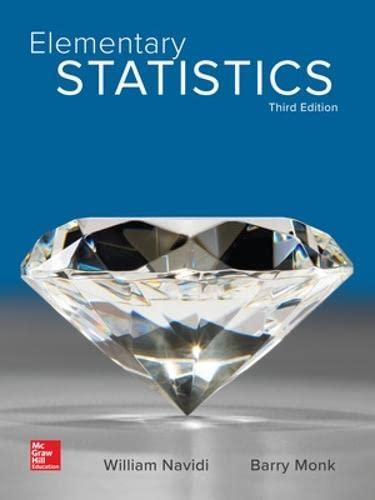A computer manufacturer has a choice of two machines, a less expensive one and a more expensive
Question:
A computer manufacturer has a choice of two machines, a less expensive one and a more expensive one, to manufacture a particular computer chip. Out of 500 chips manufactured on the less expensive machine, 70 were defective.
Out of 400 chips manufactured on the more expensive machine, only 20 were defective. The manufacturer will buy the more expensive machine if he is convinced that the proportion of defectives is more than 5% less than on the less expensive machine. Let p1 represent the proportion of defectives produced by the less expensive machine, and let p2 represent the proportion of defectives produced by the more expensive machine.
a. State appropriate null and alternate hypotheses.
b. Compute the value of the test statistic.
c. Can you reject H0 at the α = 0.05 level?
d. Which machine should the manufacturer buy?
Null difference other than 0: Occasionally someone may wish to test a hypothesis of the form H0: p1 − p2 = pd, where pd ≠ 0.
In this situation, the null hypothesis says that the population proportions are unequal, so we do not compute the pooled proportion, which assumes the population proportions are equal.
One approach to testing this hypothesis is to use the test statistic
When the assumptions of this section are met, this statistic has approximately a standard normal distribution when H0 is true.
Step by Step Answer:






